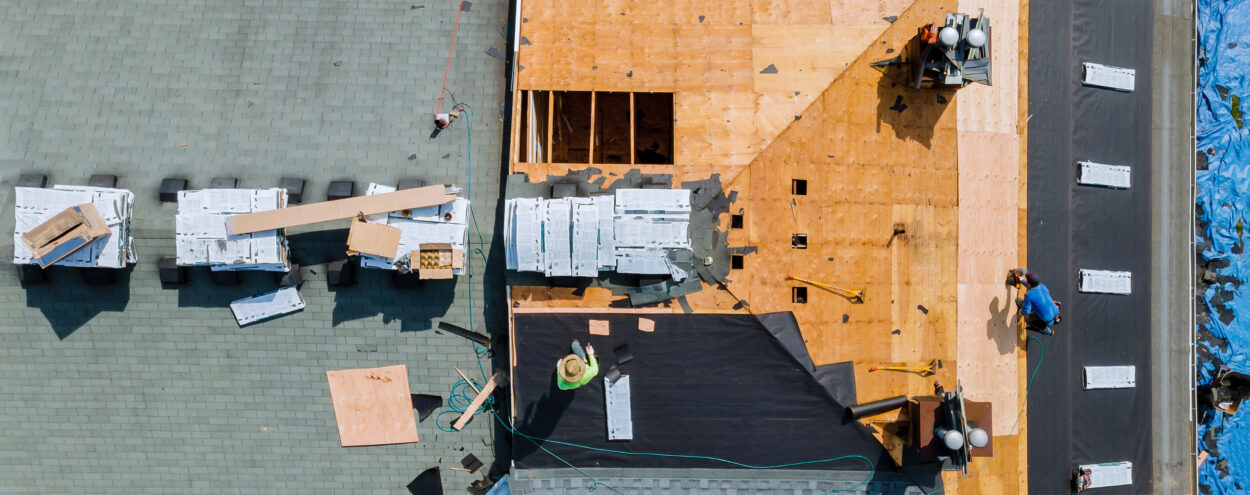10 Important Components Making Up a Roofing System. High-quality and properly installed roofs offer unmatched protection to homeowners against the elements. However, in order to install one on your home, you need to hire a roofing contractor. That’s pretty simple — except that most of the time, homeowners have no clue about what they want and they don’t understand what the roofing contractors are saying.
A roofing system is a complex structure with numerous pieces working together to provide efficient protection to your home. And unfortunately, most roofing contractors don’t have time to explain these things to an average homeowner, leaving them confused and clueless. Well, don’t fret! Our experts are here to help you. In this article, we’ll discuss everything you should know to get the most out of your roofing project. Let’s get started.
An Overview of the Roofing Structure
Before you even start installing a roof, you need a supporting structure that can guide the installation procedures. This is known as a roofing structure. This structure lies underneath the roofing materials such as tiles or shingles, so it will not be visible once your roofing installation is complete.
This structure can be made of a series of trusses, rafters, or beams. These parts can be made from a variety of materials such as lumber. Lumber is a cheap, durable, and easy-to-use material for such purposes.
The exact type of structure your roof needs will depend on the type of roofing material and the architectural style of your home. For instance, if you have a simple home, a medium-pitched structure is a good option for you. On the other hand, homeowners with regal homes should go for steep-pitched structures.
It also depends on your roofing materials. For instance, you want to install an asphalt shingle roof, you don’t need to invest heavily in a very sturdy roofing structure as shingles are lightweight and durable. On the contrary, heavy materials like slate may need a stronger structure for optimum support.
1. Rafters
These are diagonal beams that serve as primary support for your roof decking and all the components installed on them. A rafter is essentially what makes your roof steep-shaped.
2. Collar Beam
Different rafters are connected by Collar beams. These horizontal beams connect at the ridge. In general, these are installed underneath the ridge to prevent rafters from sagging. Sometimes, collar beams are also known as collar ties.
3. Ridge Board
The Ridge board is located at the very top of the roofing system. It is a long horizontal beam that ensures all the rafters hold firmly together in place. In other words, the ridge board acts as the meeting point of all the rafters. Made of timber or metal, a ridge board cohesively brings together the entire structure and makes it work seamlessly.
4. Top Plate
Your roofing structure has one more supporting beam known as the top plate. It is used for connecting rafters to your wall studs. Top plate provides support to your roofing structure by transferring the roof load to the foundation and walls of your home.
5. Ceiling Joist
These are installed in a parallel fashion under the collar beams. The main purpose of the ceiling joist is to provide support to the rafters from underneath – just like the collar beam and ridge board provide support from above.
6. Fascia Board
The fascia board is at your roof’s lower edge and it provides support to the lowermost rows of tiles once they are installed.
7. Underpurlin
These are horizontal beams that are usually located near the middle of your roofing rafters. They improve the stability of the rafters, enabling them to cover long spans easily. For this reason, underpurlins are commonly found in long buildings.
8. Sheathing/Decking
A roof decking forms the base of your roofing materials such as shingles. It is essentially a flat layer of plywood or other materials. Lightweight roof decking is commonly made from Orientated Strand Board or OSB.
9. Flashing
Most residential roofs have a steep slope. So, most homeowners are not too concerned about water issues in their homes. They just assume that water will slide down automatically on steep-sloped roofs. What they forget is that a roofing system also has chimneys and joints that are highly prone to water damage and cause issues like roof leaks in any home.
That’s precisely why flashing is installed in these vulnerable areas. It is a thin metal strip that enables water to slide off easily from the roof.
10. Ventilation
To perform efficiently, every roof needs proper air circulation. This enables a roof to get rid of hot air so that fresh air can enter. Not only does proper ventilation help prevent moisture-related issues in a home, but it can also improve your home’s energy efficiency and extend the overall lifespan of your roof.
Watkins Construction & Roofing – The Most Trusted Roofing Contractors in the Area
At Watkins Construction & Roofing, we specialize in top quality roof replacements and repairs in the area. For more information on our services, don’t hesitate to contact our knowledgeable roofing experts today. Call Watkins Construction & Roofing and get started on your complimentary consultation in Byram, Clinton, Pearl, and Jackson, MS.
